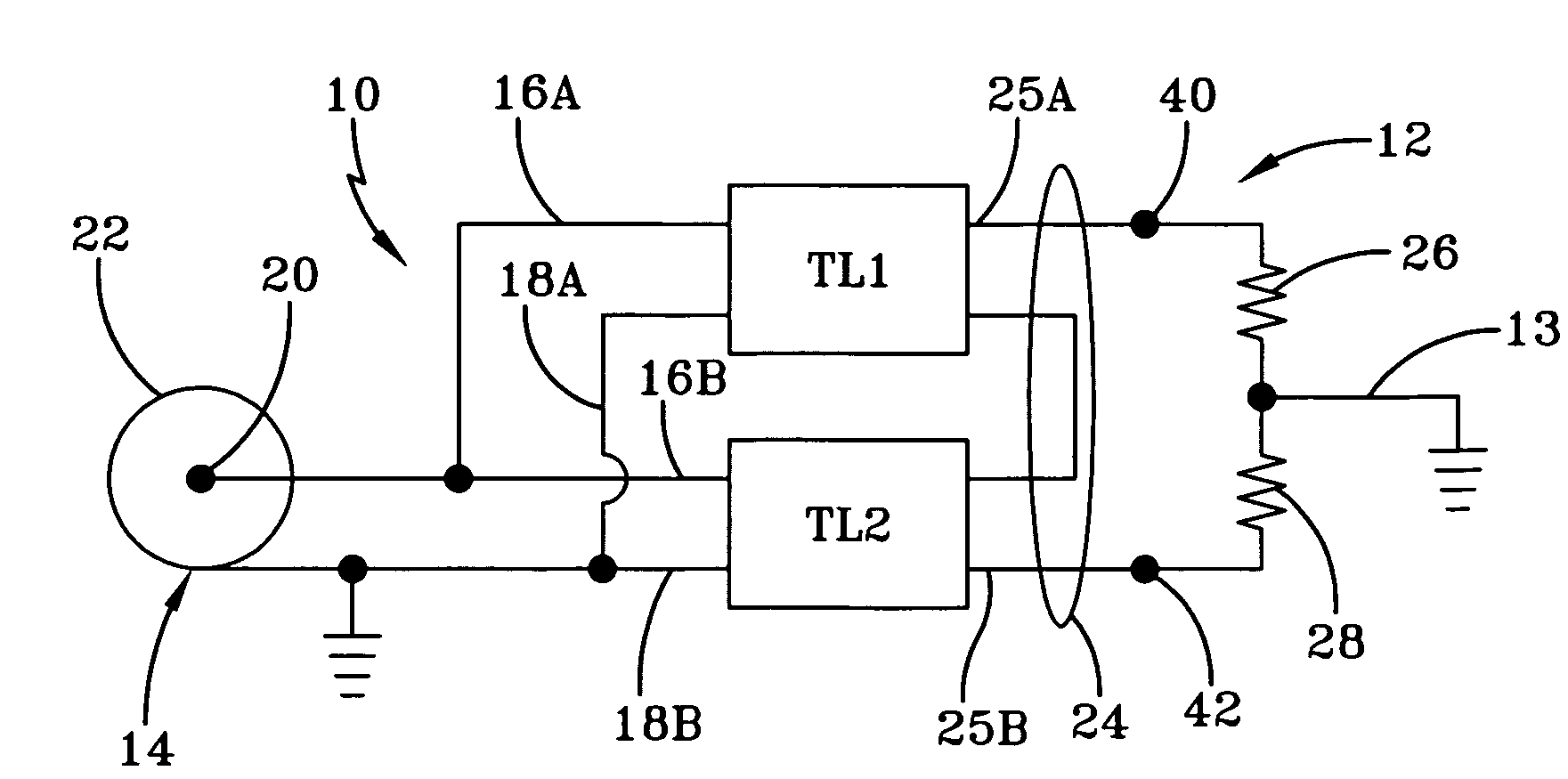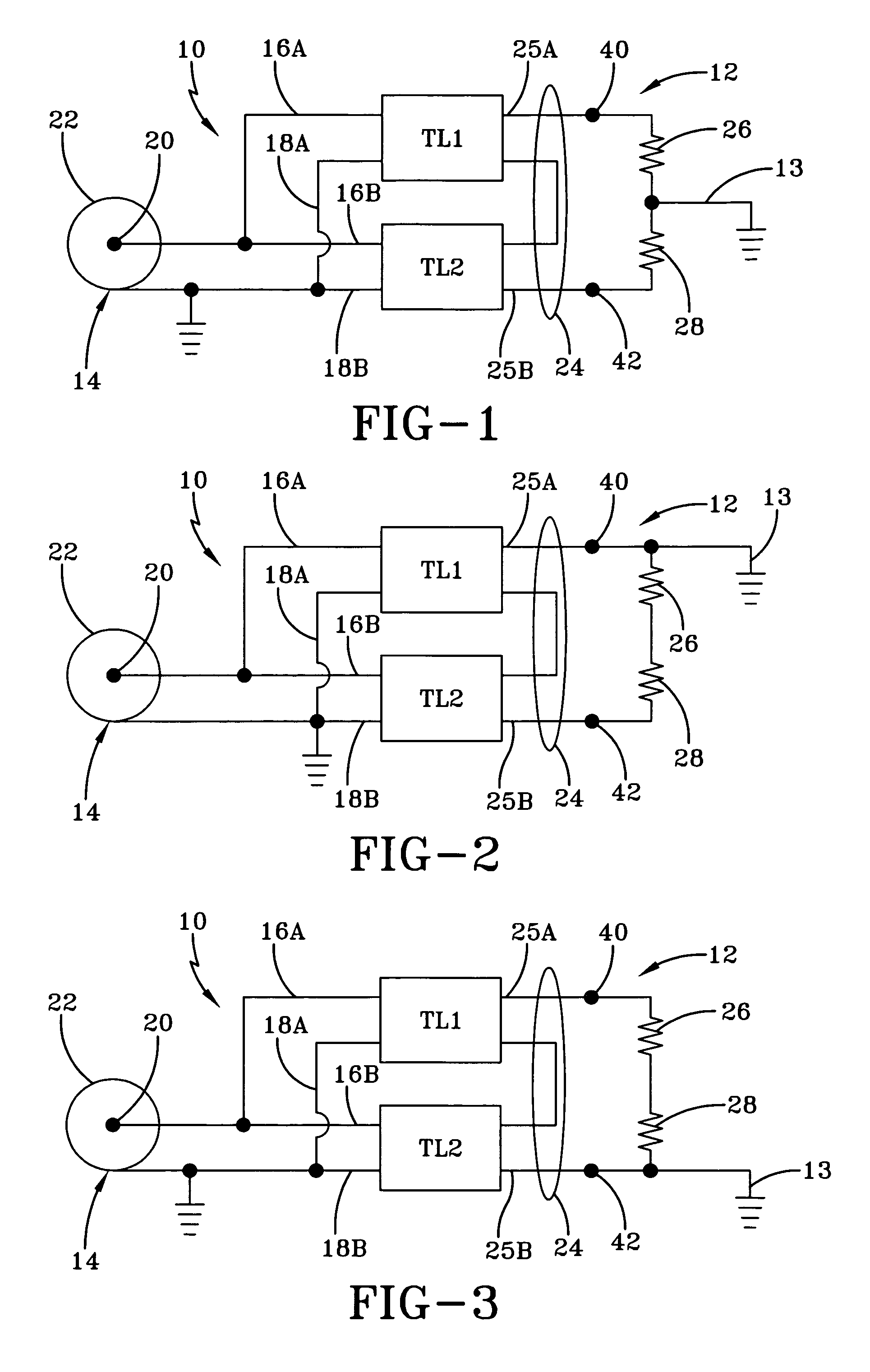Antenna balun
a technology of antenna balun and balun, which is applied in the direction of multiple-port network, electrical equipment, waveguide type devices, etc., can solve the problems of unbalanced and balanced systems, and unbalanced systems, so as to achieve the effect of discharging more power
- Summary
- Abstract
- Description
- Claims
- Application Information
AI Technical Summary
Problems solved by technology
Method used
Image
Examples
Embodiment Construction
[0020]A typical balun is identified by the numeral 10, as shown in FIGS. 1-3, and is used to couple a balanced dipole antenna 12 with an unbalanced feedline 14. Balun 10 includes two transmission line transformers referred to as TL1 and TL2. Typically, transmission line transformer TL1 and TL2 are created to have the same structural and operational characteristics. Thus, they can be said to be equivalent. However, because of the typical arrangement of transmission line transformer TL1 and TL2 with respect to the feedline 14 and antenna 12, transmission line transformer TL1 is subjected only to a portion of the common mode voltage, magnetic flux intensity, and other electromagnetic stresses that transmission line transformer TL2 is subjected to.
[0021]FIGS. 1-3 illustrate the ideal, and worst case conditions under which the balun 10 may operate. In FIG. 1, a perfectly balanced antenna 12 is shown in which the 500V signal received by the antenna 12 is equally distributed with respect t...
PUM
 Login to View More
Login to View More Abstract
Description
Claims
Application Information
 Login to View More
Login to View More - R&D
- Intellectual Property
- Life Sciences
- Materials
- Tech Scout
- Unparalleled Data Quality
- Higher Quality Content
- 60% Fewer Hallucinations
Browse by: Latest US Patents, China's latest patents, Technical Efficacy Thesaurus, Application Domain, Technology Topic, Popular Technical Reports.
© 2025 PatSnap. All rights reserved.Legal|Privacy policy|Modern Slavery Act Transparency Statement|Sitemap|About US| Contact US: help@patsnap.com


